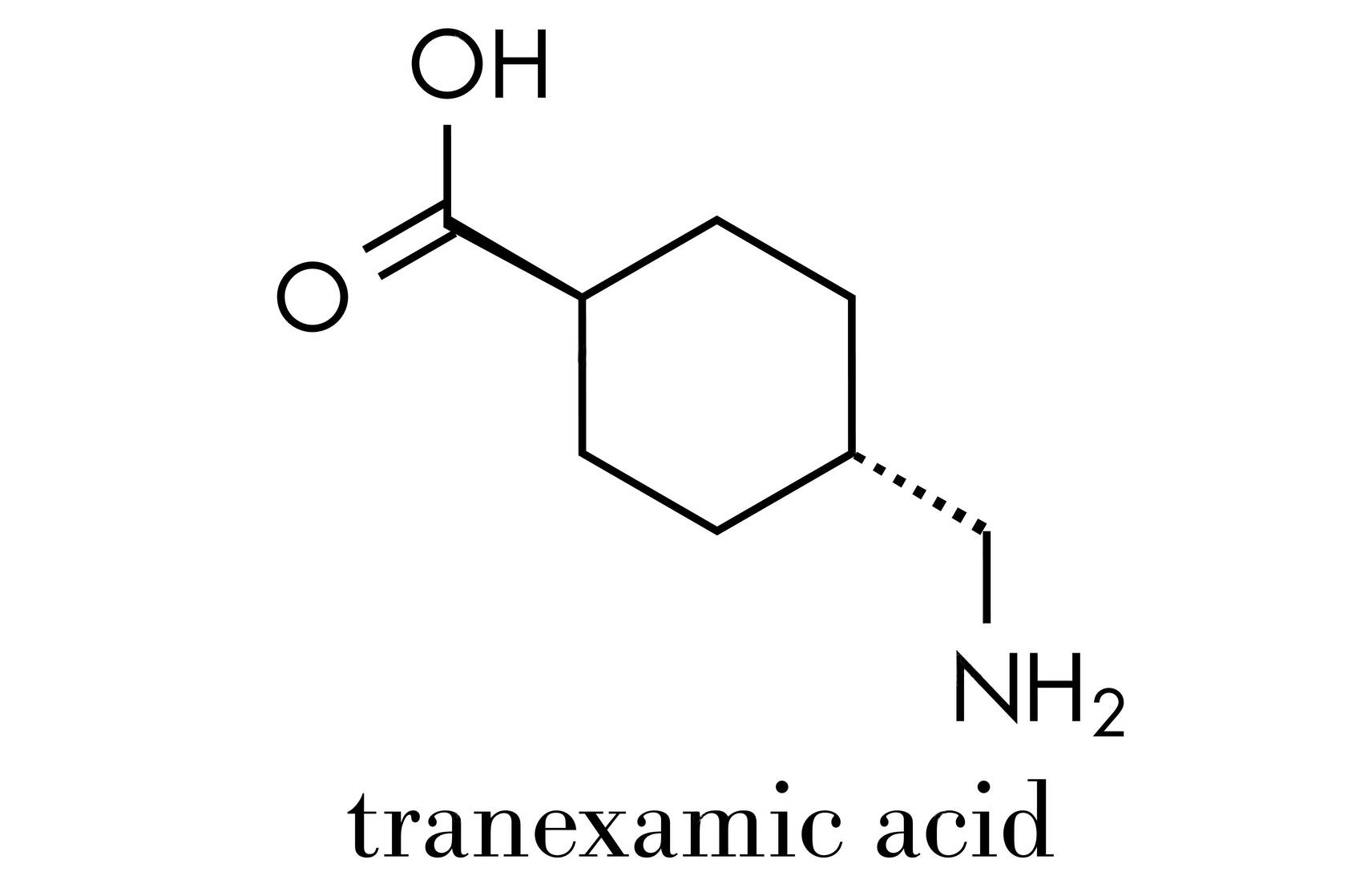Tranexamic acid (TXA) is an antifibrinolytic agent that works by inhibiting plasminogen activation and plasmin activity, thereby reducing fibrinolysis and stabilizing blood clots. Its pharmacological actions include:
Inhibition of Plasminogen Activation – Tranexamic acid binds to lysine-binding sites on plasminogen, preventing its conversion to plasmin, the enzyme responsible for breaking down fibrin clots.
Reduction of Fibrinolysis – By blocking plasmin activity, Tranexamic acid prevents the premature breakdown of blood clots, helping to control excessive bleeding.
Hemostatic Effect – Tranexamic acid is commonly used in conditions involving excessive bleeding, such as surgery, trauma, heavy menstrual bleeding, and hemophilia-related bleeding.
Anti-inflammatory Properties – Tranexamic acid has been shown to reduce inflammation by inhibiting plasmin-mediated inflammatory processes.

Clinical Uses:
- Postoperative bleeding (e.g., cardiac, orthopedic, dental surgeries)
- Trauma-related hemorrhage
- Heavy menstrual bleeding (menorrhagia)
- Hereditary angioedema
- Epistaxis (nosebleeds)
- Postpartum hemorrhage
Would you like details on its dosage, side effects, or contraindications?
Adverse effects of Tranexamic Acid
Tranexamic acid (TXA) is an antifibrinolytic medication used to prevent or treat excessive bleeding. While generally well-tolerated, it can have adverse effects, including:
Common Side Effects
- Nausea
- Vomiting
- Diarrhea
- Abdominal pain
- Headache

Serious but Rare Side Effects
- Thromboembolic events (e.g., deep vein thrombosis, pulmonary embolism, stroke) – Tranexamic acid inhibits fibrinolysis, which may increase clotting risk, especially in predisposed individuals.
- Seizures – More commonly reported with high doses, particularly in post-surgical settings.
- Hypotension – When given as a rapid IV injection.
- Visual disturbances – Rare but includes impaired color vision and other visual abnormalities.
Contraindications & Caution
- History of thromboembolic disorders (e.g., DVT, stroke)
- Renal impairment (Tranexamic acid is renally excreted, so dose adjustment may be needed)
- Subarachnoid hemorrhage (risk of cerebral vasospasm and ischemia)
Would you like information on specific populations, such as pregnancy or pediatrics?
